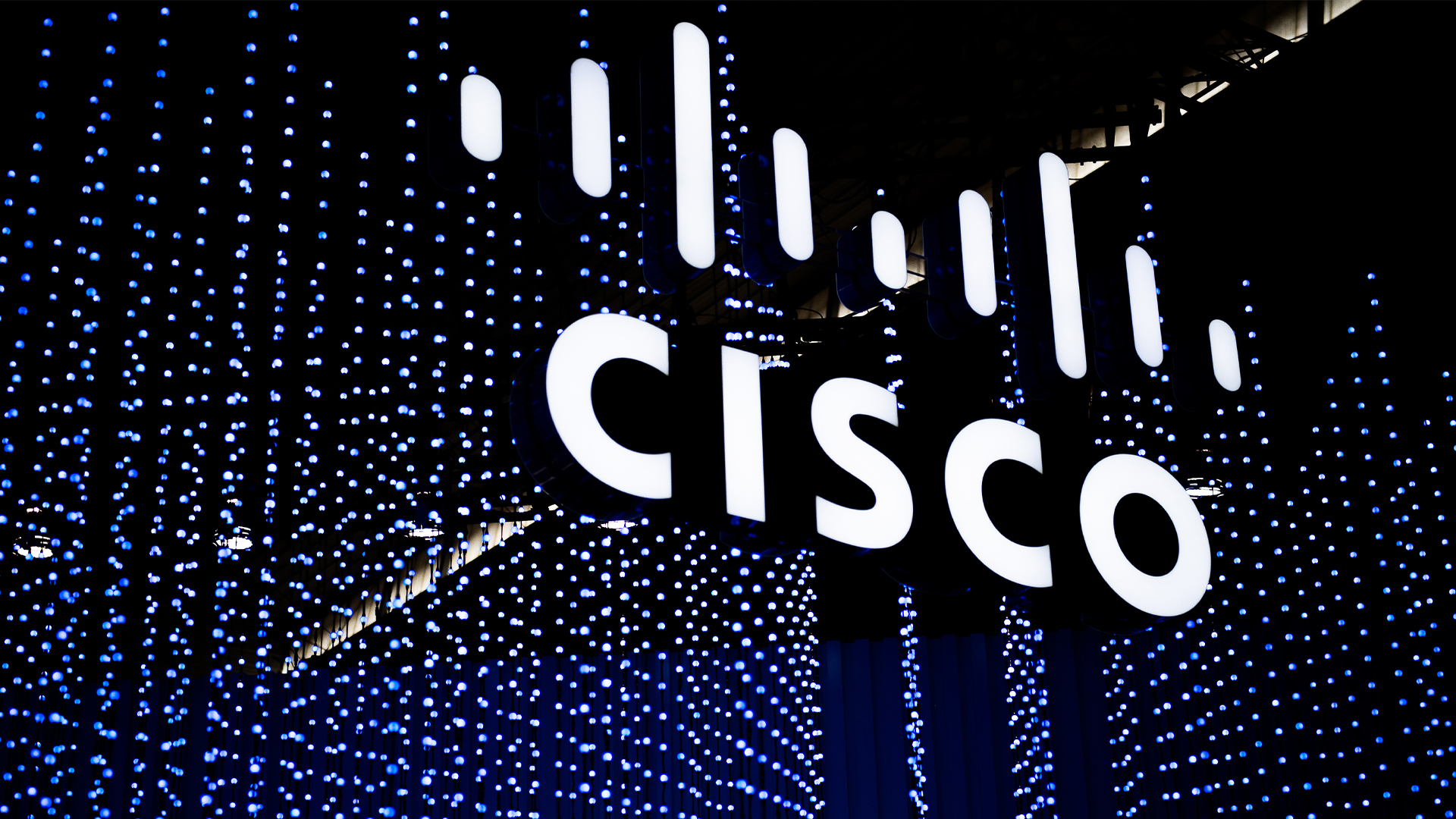Battle of the giants: HP vs IBM vs Cisco
Will Garside compares the vendors' product roadmaps, and their partnering potential

With combined revenues of roughly $250bn and a combined workforce of just over 750,000, (a match for the 7th largest army in the world), the big three of the IT hardware and software industry - HP (NYSE:HPQ), IBM (NYSE:IBM), and Cisco (NASDAQ:CSCO) - are a force to be reckoned with.
With the exception of Microsoft, the trio are the most channel-centric organisations within the industry and it’s be a good guess that 99 percent of all IT-focused VARs are a partner of at least one.
Yet, partnering with any vendor is a commitment of time and money. Although all three brands increasingly have fingers in many pies, they are not equal and offer different strengths and weaknesses which are worth considering before signing on the dotted line.
Background
As the oldest, IBM recently celebrated its 104th birthday and with 425,000 employees, it is the largest of the trio and the most diverse in terms of portfolio – although in recent years it has started curb its long tail of products.
Alongside servers and storage, the company has a vast software expertise and vertical market footprint. The company also has R&D in areas like artificial intelligence and tacit support for open source projects a-plenty. Yet, it is from its consulting and professional services that IBM makes it real corn, and in many cases this will actively involve partners.
HP is the most revenue-generating of the three. With 2014 turnover of $111bn, the company also has an impressive 76 year history. But it was in the 1980s that the company famous for calculators established itself as the dominant force in the emerging laser and inkjet printer markets. Then the PC market picked up in the 1990s –an era where HP acquired its rival Compaq to become the defacto number one PC maker for a number of years.
ChannelPro Newsletter
Stay up to date with the latest Channel industry news and analysis with our twice-weekly newsletter
At revenues of around $50bn, Cisco is the smallest of the big three but in many ways possibly the most dominant within its core sphere. Across the various networking segments, the firm has around half of the market for routers, switches, fixed and wireless depending which analysts’ reports you believe. The firm also has one of the fastest growing server and storage business thanks to its ultra-dense blades that are promoted with its VoIP products – although still trailing far behind HP.
Storage
Although the trio still trail behind the dominant EMC, the commoditisation of many storage technologies and the rise of new software defined alternatives have shifted the market away from the monolithic arrays of yesteryear towards more flexible options.
Both HP and IBM have a full portfolio stretching from true enterprise with IBM’s XIV series and HP’s acquired and now embedded 3Par storage as respective flagships, and a number of tiers down to small business. Although at the real SMB, HP has the more cost-effective entry level offering of the group.
For Cisco, storage is more about the SAN infrastructure with actual capacity as an attachment to its UCS Blade server sales, and as such is just functional. As a partner with a deep requirement for storage solutions, Cisco is less of a requirement for partnership with HP and IBM offering a better breadth and depth of solution.
Servers
As one of the originators of the mainframe concept and dominance in high end RISC-based, LINUX/UNIX server market, IBM still has dominance in many segments of the server space through well-engineered products and a deep tail of support delivered through a well-trained and extensive channel footprint.
Yet, IBM has recognised that commoditisation is creeping in and has pared down its server portfolio to concentrate on what it does best. Although rival HP has more server sales volumes, in the high end HPC space, IBM is still the dominant player in list like the top 500 supercomputers. Yet HP’s approach of pushing its X86 mid-range servers as replacement for IBM monoliths is sound, while still keeping skin in the game with its own HP-UX offering makes it a solid choice for any partner with a server-centric customer base.
Although Cisco UCS is a fast growing contender, its basic nature and constrained flexibility make it a good choice for applications like Call Manager but not a basis to build a mature server business around.
Networking
Although HP has strengthened its networking portfolio, both on wired and wireless in recent years with 3Com and Aruba acquisitions, and IBM has good top of rack switches for connecting its blades, the depth of the Cisco networking portfolio eclipses both.
Yet, the strongest asset for Cisco in this sphere is its channel and training regime. With Cisco networking accreditation almost mandated for almost all senior network admin jobs, even to point that rival vendors will accept Cisco accreditation as proof that a partner can use its own kit; the reach of the firm goes far beyond its sales. With the purchase of Meraki in 2012, Cisco finally ended the weakness in its wireless portfolio and its grudging acceptance of more open standards, SDN looks likely to strengthen its future position. Cisco accreditation is almost a must have for any serous networking practice.
Yet, without sounding like a fence sitter, Cisco doesn’t necessarily produce the best products. Rivals like Juniper Networks and Arista Networks offer some extremely powerful and innovative alternatives at better price points. In an ideal world, a partner should consider a Cisco plus one arrangement to provide the competitive edge where the slow turning Cisco maybe lacks an innovative product.
Cloud
Seen by many as the future of ICT delivery, both HP and IBM have invested heavily in cloud services programmes to help partners offer cloud.
IBM built a fledgling but limited cloud offering then acquired Softlayer to accelerate its efforts while HP grows its own capability largely organically. Both make it relatively easy for partners to buy and resell services although HP has a more granular “Amazon style” pricing model which makes it easier for partners to put their toe into the water without much risk.
HP is also slightly in the lead when it comes to offering additional upsell add-ons around storage, CDN and applications which makes it a good fit for partners that are investing heavily in cloud. Although both have chosen to follow the OpenStack path, which makes it easier to swap out to another provider, they have less depth in terms of features to rival Amazon – which although more complex, is a better fit for partners that are keen to differentiate cloud expertise and for more complex use cases.
Although Cisco also has a set of cloud services, again based on OpenStack, this is more focused on building clouds then as packaged services and is not comparable in scope to either HP or IBM.
Channel stats: Cisco
Channel sales worldwide
80 percent of overall sales
Partners enrolled in the Cisco partner programme worldwide
68,000 partners authorised to sell and support Cisco solutions
22,250+ specialised partners & 13,900+ certified partners
Channel stats: HP
Channel sales worldwide
Printing and Personal Systems Group (PPS): 80 percent of overall sales (commercial and consumer)
Enterprise Group: 70 percent of overall sales
Partners enrolled in the HP partner programme worldwide
PPS: 230,000
Enterprise Group: 90,000
Channel stats: IBM
Despite requests, IBM declined to provide any information about its channel
Summary
Although often mentioned in the same breath, it’s clear that the big three are vastly different beasts in many ways.
It’s hard to pigeonhole them but it is worth trying to make navigating the partnering opportunities easier. In essence, for a resellers and VARs with diverse customers that need a bit of everything from desktops, networking and storage with maybe a dash of cloud – then HP is a safe pair of hands. It has a solid and balanced portfolio and although there is uncertainty around its desktop PC business, this is not a major detrimental factor in partnering with the vendor.
IBM is more focused at the larger enterprise and its long association with HPC and extended professional services capabilities makes it a good choice for more specialist and vertical markets. Although a harder community to join, getting in for the long haul will provide a partner that does value and look after its invested channel partners.
Cisco is the more focused of the bunch and still the networking king. It’s refocusing on its core has helped its partners as has its acceptance that top tier partners can deliver support and professional services that Cisco once wanted to keep close to its chest is a sign that it is maturing. With a product portfolio that is still tier one and a brand and professional certification structure that is highly regarded, if your business is networking-centric, it is still hard to build a business without some Cisco relationship – even if other rivals may have technically better products.
-
 CyberOne appoints Microsoft’s Tracey Pretorius to its advisory board
CyberOne appoints Microsoft’s Tracey Pretorius to its advisory boardNews The threat intelligence leader will provide strategic guidance to CyberOne’s executive team
By Daniel Todd
-
 CISA issues warning in wake of Oracle cloud credentials leak
CISA issues warning in wake of Oracle cloud credentials leakNews The security agency has published guidance for enterprises at risk
By Ross Kelly
-
 Cisco names Oliver Tuszik as global sales chief
Cisco names Oliver Tuszik as global sales chiefNews Cisco has announced the appointment of Oliver Tuszik as its new executive vice president of global sales, who replaces Gary Steele.
By Daniel Todd
-
 Selling on outcomes, not solutions – how the channel can improve sales success in 2025
Selling on outcomes, not solutions – how the channel can improve sales success in 2025Industry Insights The traditional solutions-led approach to channel sales needs to be adapted – here’s how
By Phil Skelton
-
 Wasabi Technologies promotes Jon Howes to SVP of global sales
Wasabi Technologies promotes Jon Howes to SVP of global salesNews The industry veteran will lead the cloud storage firm’s global sales operations as it looks to further growth
By Daniel Todd
-
 Why technology resellers are essential to UK government
Why technology resellers are essential to UK governmentIndustry Insight Technology resellers can play a pivotal role in supporting public sector digital transformation
By Sean Collins
-
 How the channel can maximize market opportunities for business growth
How the channel can maximize market opportunities for business growthIndustry Insight Adapting to emerging technology trends, fostering closer client relationships, and building a strong online presence will be key to maximizing channel growth
By Anton Shelepchuk
-
 Understanding the customer journey is key to building stronger client relationships
Understanding the customer journey is key to building stronger client relationshipsIndustry Insight Understanding the complexities of the modern customer journey will be key to fostering robust, long-term relationships with clients
By Tony McNish
-
 Building channel resilience in 2023 and beyond
Building channel resilience in 2023 and beyondIndustry Insight Building a resilient, robust channel ecosystem could be key to weathering current economic trends
By John Nolan
-
 Veritas bolsters partner program with new incentives and rewards
Veritas bolsters partner program with new incentives and rewardsNews A simplified channel platform process will enable partners to focus on their core strengths in FY24, the company says
By Daniel Todd